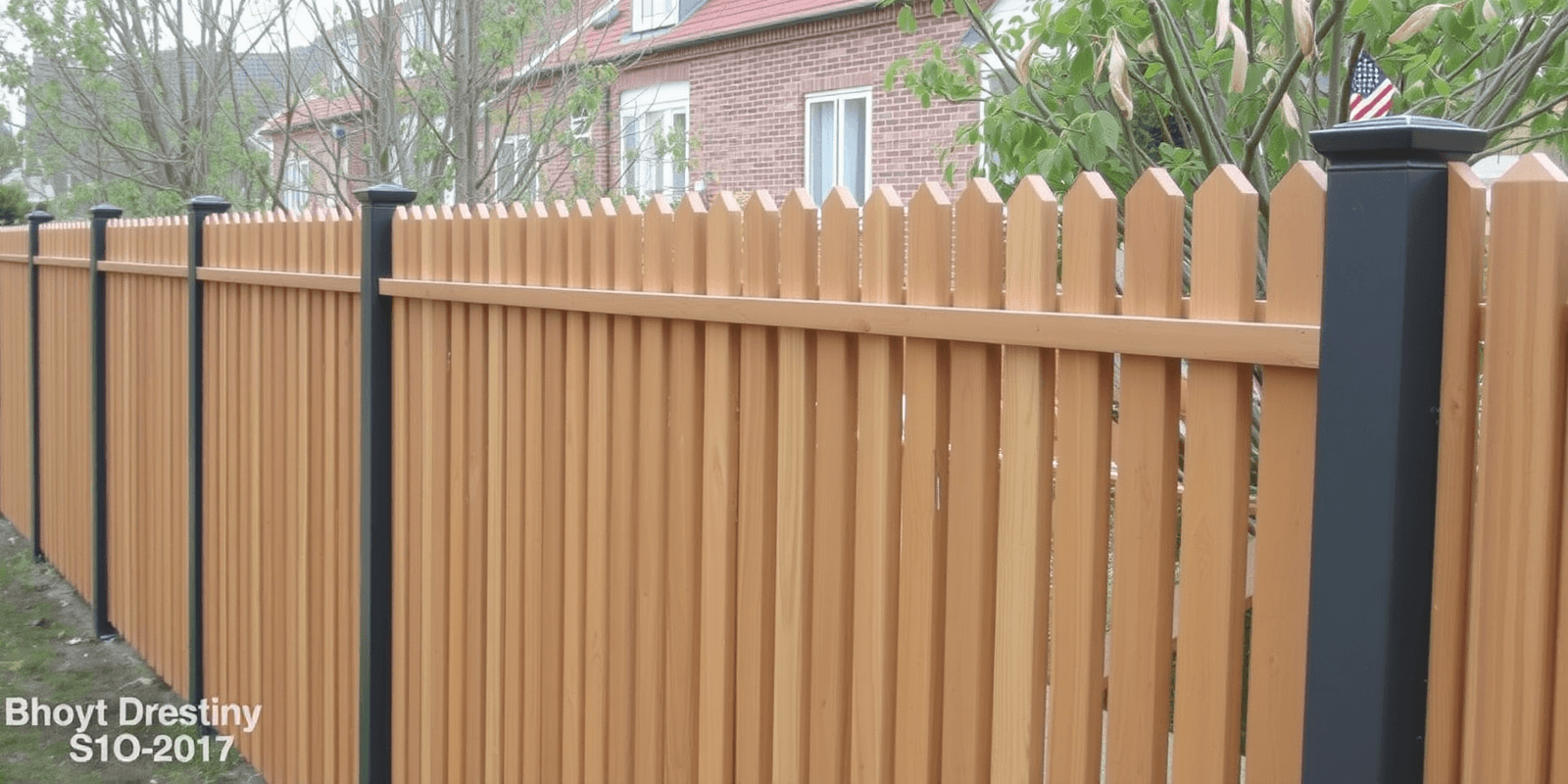Physical Address
304 North Cardinal St.
Dorchester Center, MA 02124
Physical Address
304 North Cardinal St.
Dorchester Center, MA 02124

Discover the numerous benefits of wood plastic composite fencing for sustainable outdoor living spaces. This eco-friendly material offers durability and low maintenance.
Wood plastic composite (WPC) fencing has emerged as a popular alternative to traditional wooden or metal fences. This innovative material combines the natural beauty of wood with the durability and low-maintenance properties of plastic. WPC fencing not only enhances the aesthetics of your garden but also promotes environmental sustainability by reducing waste and minimizing the use of virgin materials. In this article, we will explore the benefits of using WPC fencing in your garden, including its resistance to rot, insects, and weathering, as well as its minimal need for upkeep.
One of the primary reasons homeowners choose WPC fencing is its aesthetic appeal. The material comes in a variety of colors and textures that mimic natural wood grain, allowing you to create a fence that complements your home’s architectural style and garden landscape. Unlike traditional wooden fences that can fade or become discolored over time, WPC fencing retains its color and appearance, ensuring that your garden remains visually appealing for years to come.
Moreover, WPC fencing offers design flexibility. You can customize the height, width, and even add decorative elements such as lattice panels or pickets, making it easy to tailor the fence to your specific needs and preferences. This versatility makes WPC fencing an ideal choice for both functional and ornamental purposes, whether you’re looking to enhance privacy, define property boundaries, or simply add a touch of elegance to your outdoor space.
Beyond its aesthetic qualities, WPC fencing offers significant environmental benefits. Traditional wooden fences require frequent maintenance, such as painting, staining, and sealing, which can be harmful to the environment due to the release of volatile organic compounds (VOCs). In contrast, WPC fencing requires minimal maintenance, reducing the need for these environmentally damaging practices. Additionally, the production process of WPC fencing typically uses recycled plastic and wood fibers, diverting waste from landfills and reducing the demand for new timber.
Furthermore, WPC fencing is highly resistant to rot, insects, and weathering, which means it can withstand harsh environmental conditions without deteriorating. This longevity reduces the frequency of replacement, thereby decreasing the overall carbon footprint associated with fence construction and disposal. By choosing WPC fencing, you are not only enhancing your garden’s aesthetics but also contributing to a more sustainable future.
One of the most compelling advantages of WPC fencing is its inherent resistance to rot, insects, and weathering. Traditional wooden fences are susceptible to decay when exposed to moisture, leading to structural damage and the need for frequent repairs. However, WPC fencing is impervious to moisture, making it resistant to rot and mold growth. This characteristic ensures that your fence remains structurally sound and visually appealing, even in damp climates.
In addition to its resistance to water damage, WPC fencing is also resistant to insect infestation. Unlike traditional wood, which can attract termites and other pests, WPC fencing does not provide a suitable habitat for these organisms. This added layer of protection not only extends the lifespan of your fence but also eliminates the need for chemical treatments that can harm the environment.
Furthermore, WPC fencing can withstand extreme weather conditions, including high winds, heavy rain, and intense sunlight. Its ability to resist warping, cracking, and fading makes it an excellent choice for homeowners living in regions prone to severe weather events. This durability ensures that your fence remains intact and functional for many years, providing long-term value and peace of mind.
Another key advantage of WPC fencing is its minimal need for upkeep. Unlike traditional wooden fences that require regular maintenance, such as painting, staining, and sealing, WPC fencing is designed to resist the elements and maintain its appearance with minimal effort. Occasional cleaning with mild soap and water is usually sufficient to keep the fence looking pristine.
Moreover, WPC fencing does not require periodic treatment with preservatives or pesticides, which can be harmful to the environment. This reduction in maintenance activities not only saves time and money but also contributes to a more sustainable lifestyle. Homeowners can enjoy their beautifully landscaped gardens without the burden of constant upkeep, allowing them to focus on other aspects of their outdoor living space.
Wood plastic composite fencing represents a modern solution that combines the beauty of wood with the durability and sustainability of plastic. Its ability to enhance your garden’s aesthetics while promoting environmental sustainability makes it an attractive option for homeowners seeking both form and function. By choosing WPC fencing, you can enjoy a fence that resists rot, insects, and weathering, requiring minimal upkeep and contributing to a greener future.
Understanding the Properties and Performance of Wood Plastic Composites